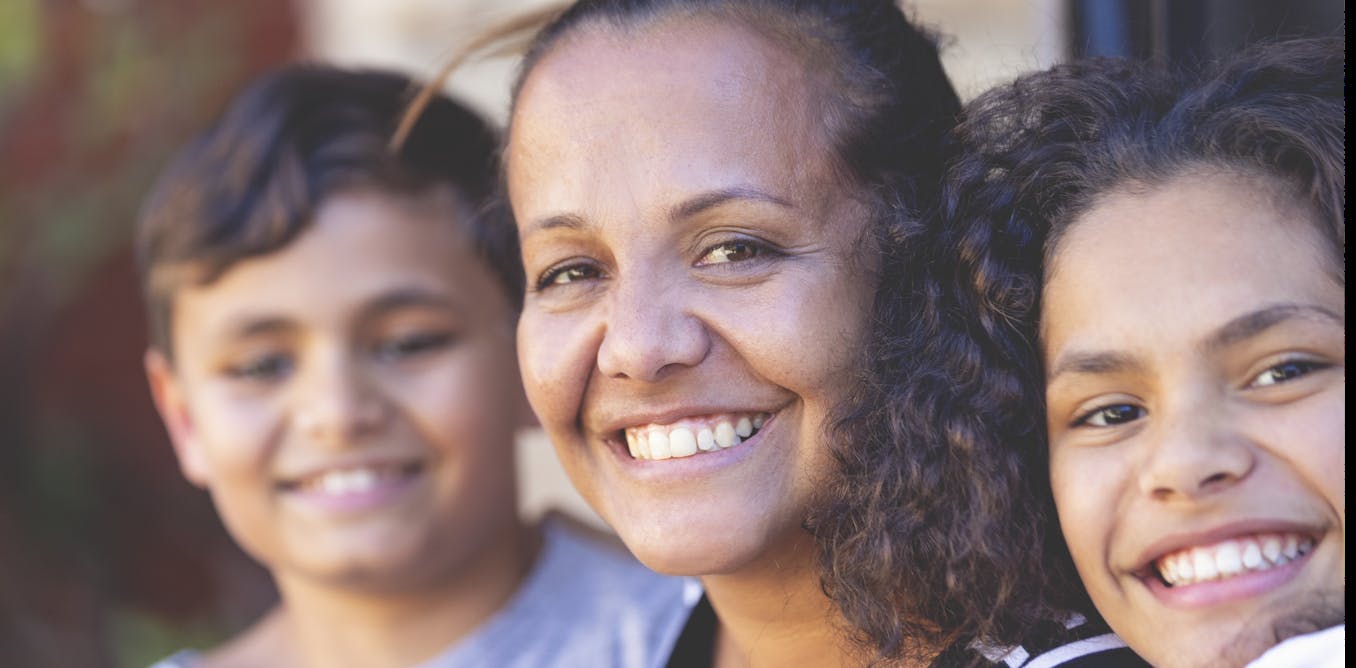
- Select a language for the TTS:
- UK English Female
- UK English Male
- US English Female
- US English Male
- Australian Female
- Australian Male
- Language selected: (auto detect) - EN
Play all audios:
It’s commonly accepted that women do the vast majority of caregiving in Australian society. But less appreciated is that Indigenous women do larger amounts of unpaid care than any other
group. Working with the Aboriginal and Torres Strait Islander Social Justice Commissioner’s office, we worked with more than 100 Indigenous women across Australia to talk about their
interpretations and experiences of care. “Mainstream” definitions and measures of care do not include the vast and complex ways care is defined by First Nations women. This includes care not
only for people, but for communities, Country and culture. It means important work goes unrecognised, uncompensated or misunderstood, leading to the marginalisation of this crucial work and
the women who do it. ------------------------- _ READ MORE: 'DEFINITIONS ARE OFTEN VERY WESTERN. THIS EXCLUDES US.' OUR RESEARCH SHOWS HOW TO BOOST INDIGENOUS PARTICIPATION IN
STEM _ ------------------------- REDEFINING THE CONCEPT The Australian Human Rights Commission’s Wiyi Yani U Thangani report illuminates the crucial importance of the care provided by First
Nations women. Our work follows and builds on this report. An Indigenous woman from the East Kimberley told us: > Well, care for me, as an Indigenous person, is not just caring for >
your family, it’s caring for your Country. Another woman from the ACT told us care is a disposition, and a means of respecting culture and heritage: > [Care is] enveloped in everything we
do and everything we are and > everything about where we are going and paying homage again to our > ancestors and who’s come before us. That’s what care is. This notion of care as a
strength is an important insight from the women in this study. However, unpaid care is often unrecognised and undervalued in Australian policy, which while prioritising getting women into
employment, has neglected funding and supporting the existing unpaid care work that women do. What is evident from our study is that Indigenous women want more support for the care work they
do, as well as better care services largely within Aboriginal community-controlled organisations to assist them in doing it. CARE HAS CONSEQUENCES Women frequently linked their demanding
care loads to ongoing colonisation, which continues to create damage to the lives of Aboriginal and Torres Strait Islander people. A woman from greater Sydney said: > It’s colonial […]
It’s just not being able to do things in the > way we should be doing them […] because of the colonial structure > and things like that. This includes the impacts of colonisation on
gender roles, child removals, incarceration rates, poor health, poverty, racism and more. It also includes the impacts of state institutions set up to “care”, but which are often uncaring
and may be violent and harmful. Ultimately, this requires Indigenous people’s care to heal, adding extra demands on existing care loads. ------------------------- _ READ MORE: FIRST NATIONS
WOMEN DON'T ALWAYS ACCESS HEALTH CARE AFTER HEAD INJURIES FROM FAMILY VIOLENCE. HERE'S WHY _ ------------------------- Many of the women interviewed in this study were also tired,
and often carers needed care too. Some were in, or had been through, periods of utter exhaustion and illness due to trying to carry their stressful care load. A Central Australian woman told
us: > It’s hard. It’s draining. Every day just exhausted. Sometimes > there’s days when I just can’t keep up with it. And I don’t > want to listen, just go away. But those are days
when they really > need help. So yeah, it’s very exhausting. TIME IS MONEY, BUT NO ONE GETS PAID Our research also included a time-use survey, which showed that all unpaid care
activities accounted for, on average, 62% of our participant women’s time on a usual weekday (about 14.8 hours per day on average), with 48% of their time (around 11.5 hours) spent caring
for others and/or caring for Country and culture specifically. Because (lost) remuneration for this work was raised as a crucial point by Indigenous women during our interviews, we also
calculated the approximate market value of this unpaid care work through using hourly award rates for corresponding care activities (sometimes called the replacement method, which
understands the cost of this work in the paid market). The estimated economic value of this work ranged between $223.01 and $457.39 per day (representing an estimated annual salary of
between $81,175.64 and $118,921.40). This estimation is conservative as it does not include the multitasking of more than one care activity at the one time. The estimation raises important
questions as to what is owed to Indigenous women, not just because the economy free-rides on unpaid care, but also because much of this care work mops up the mess of colonisation. Many of
the women we spoke to also talked about how unpaid care and paid employment interact. In addition to their unpaid care roles, most women in paid employment in this study had roles in the
community sector which put them at the frontline of caring for community. They saw this work as part of their broader commitment to supporting their families, communities and advancing
Indigenous peoples. It is therefore hard to draw a line for these women between paid and unpaid work, meaning it is rare to be able to “switch off”. Often, employers didn’t realise the
amount of unpaid care of this type women do in their paid work roles, even though this actually makes their paid employment successful. Women are also not paid adequately for these valuable
skills. A NEW APPROACH IS NEEDED Our research follows generations of Indigenous women who have long shown the strength of care, but also looks at how settler society makes this work harder.
This research underlines the importance of a new approach to supporting Indigenous women, in which their voices, ideas and needs are central, and where care is placed at the heart. This is
different to just “fitting” Indigenous care into various settler models, policies and measures already in circulation.







